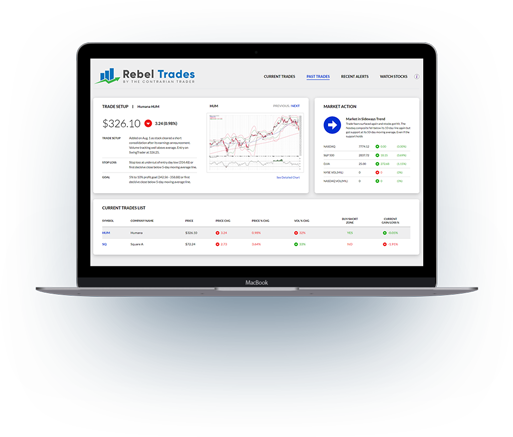Written by Robert Desmond CEO The Contrarian Trader
Contrarian investing and trading are strategies that challenge the traditional approach of following market trends. These methods involve taking positions opposite to the prevailing market sentiment, allowing investors to capitalize on undervalued assets or overhyped stocks. In this blog post, we’ll explore the principles of contrarian investing, how it differs from other strategies like value investing, and key techniques to profit from market overreactions.
What is Contrarian Investing?
Contrarian investing is a strategy where investors deliberately go against market sentiment. When the majority of market participants are bullish and buying into rising stocks, contrarians often sell, believing the market is overvalued. Conversely, when most investors are bearish and selling off stocks, contrarians see buying opportunities, recognizing that fear and pessimism have pushed prices below their intrinsic value.
Famed investor Warren Buffett sums up contrarian investing with his famous quote: “Be fearful when others are greedy, and greedy when others are fearful.” Successful contrarians must be able to withstand the emotional pressures of going against the grain, holding their positions until the broader market recognizes the opportunity they’ve spotted.
Understanding Market Sentiment and Herd Mentality
The stock market is frequently driven by market sentiment, which is shaped by investor emotions like fear and greed. This results in the herd mentality, where investors follow the actions of the majority. Contrarians believe that these emotional swings lead to market inefficiencies, overpricing “hot” stocks and undervaluing distressed ones.
Contrarian trading takes this a step further by using tools like technical analysis to identify turning points in trends. Indicators such as support and resistance levels, RSI (Relative Strength Index), and MACD (Moving Average Convergence Divergence) can help spot when market sentiment is at an extreme, signaling the best time to enter or exit a trade.
Contrarian vs. Value Investing
While both contrarian investing and value investing focus on finding undervalued stocks, there are important distinctions. Value investors believe that markets overreact to news, and they focus on the long-term fundamentals of a company. Contrarian investors, on the other hand, look for opportunities where market sentiment has shifted too far in one direction, regardless of the company’s fundamentals.
In practice, a contrarian might buy into distressed stocks during periods of extreme market pessimism, believing that the stock is undervalued based on its intrinsic value. When the market sentiment eventually rebounds, the stock price increases, offering profits to the contrarian investor.
How Contrarian Traders Profit from Market Trends
In contrarian trading, timing is everything. While simply going against market sentiment can be dangerous, the key is recognizing when market trends are about to reverse. This requires a deep understanding of market sentiment, human psychology, and technical indicators.
For example, when retail investors begin jumping into a trade during a period of extreme bullishness, a contrarian trader might interpret this as a sign that the market is about to peak. Similarly, during extreme pessimism, when stock prices are falling rapidly, contrarians look for signs of a bottom and prepare to buy undervalued stocks.
Contrarian traders often rely on technical indicators like RSI and MACD to identify when stocks have been oversold or overbought. Additionally, tracking support and resistance levels can help traders pinpoint key price points where trends are likely to reverse.
Famous Contrarian Investors
Several prominent investors have made their fortunes by employing contrarian strategies. Warren Buffett, perhaps the most famous contrarian investor, consistently advises buying when others are fearful. During the 2008 financial crisis, he made significant investments in companies like Goldman Sachs, profiting handsomely as the market recovered.

Another example is Michael Burry, whose contrarian bet against the U.S. housing market prior to the 2008 crisis earned him millions. His story was immortalized in the book and movie The Big Short. David Dreman, a pioneer in contrarian investment strategies, has long advocated for investing in distressed stocks that the market has written off prematurely.

Risks and Rewards of Contrarian Investing
Contrarian investing can be highly rewarding but also risky. While the potential for profits is significant, the strategy often requires patience and a strong tolerance for risk. Contrarians may have to endure paper losses for an extended period as they wait for the market to recognize the mispricing they have identified.
Additionally, identifying true opportunities requires extensive research and fundamental analysis. Contrarian investors must be able to accurately assess a stock’s intrinsic value to ensure they are not simply buying into a company that is struggling for legitimate reasons.
Key Techniques for Successful Contrarian Trading
To succeed as a contrarian trader, it’s essential to combine market sentiment analysis with technical indicators. Here are a few key techniques:
- Use support and resistance levels to identify critical turning points in market trends.
- Track RSI and MACD to spot signs of market exhaustion, indicating potential reversals.
- Look for retail investor participation in a trade as a sign of trend exhaustion.
- Time your trades carefully, entering as sentiment starts to shift, not before.
By using these techniques, contrarian traders can catch the beginning of trend reversals and position themselves for significant profits.
Conclusion
Contrarian investing and trading offer a way to profit from market inefficiencies created by fear, greed, and herd mentality. While the strategy requires patience, research, and technical skills, the rewards can be substantial. With careful timing, technical analysis, and a clear understanding of market sentiment, contrarian investors can capitalize on opportunities that others might miss. Whether you’re a seasoned investor or just starting, there’s a little contrarian in all of us.



